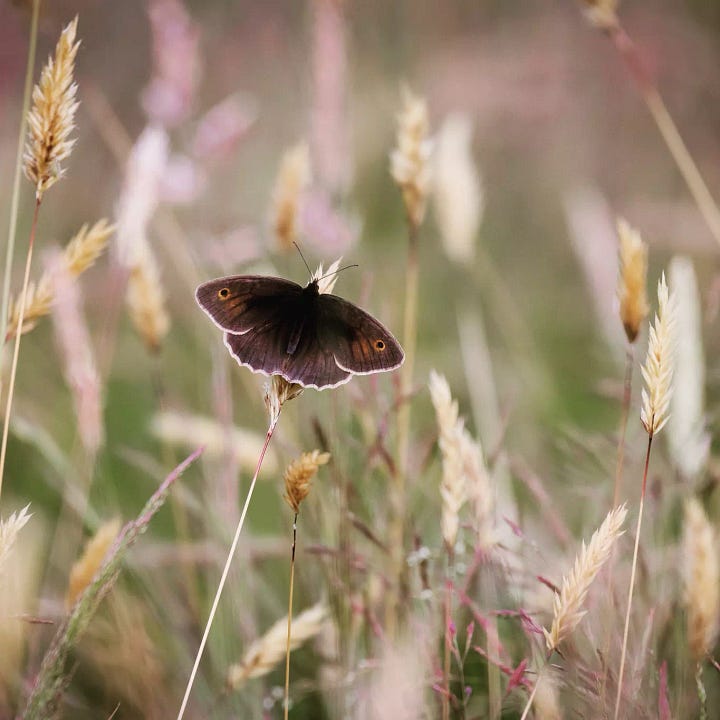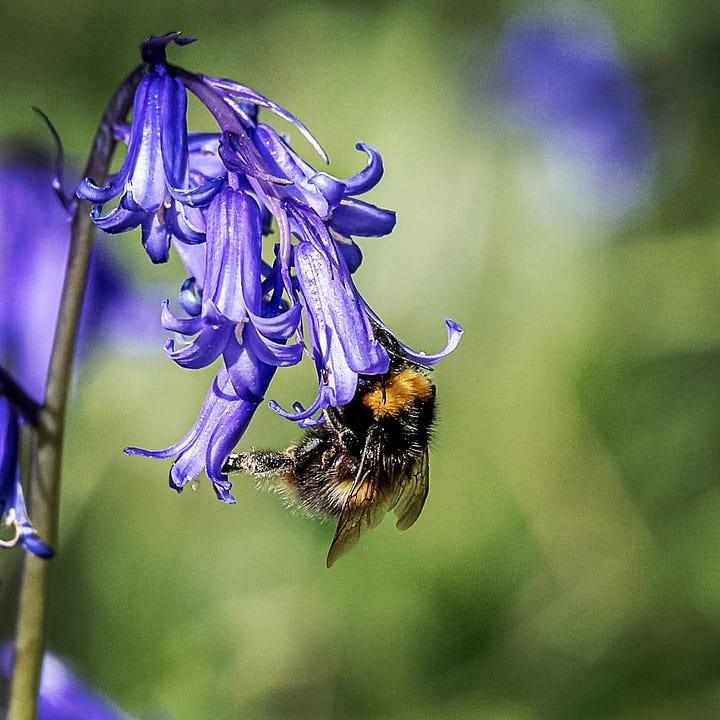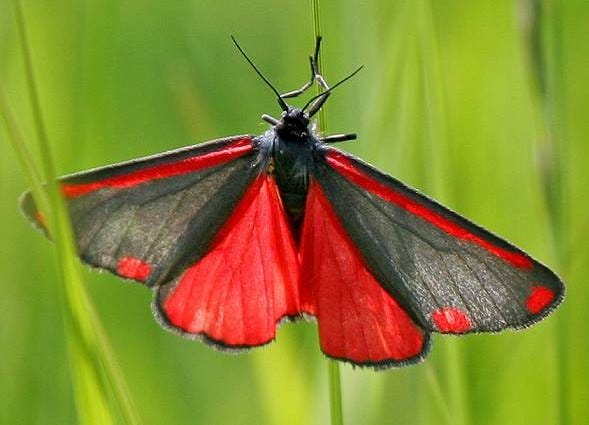Section 4.a. "Smaller-Scale Rewilding: A Practical Guide to Restoring Nature in Your Own Space"
The latest section of LettsSafari's guide to smaller-scale rewilding: 'Key Plants, Trees, and Wildlife for Smaller-Scale Rewilding.'
We’re publishing weekly instalments of the definitive guide to smaller-scale rewilding directly in LettsSafari+ and to your inbox - section after section, week after week. Packed with amazing photography and immersive videos straight from our parks.
If you're not a paid member of LettsSafari, subscribe today. Get the amazing guide and help us build more rewilding safari parks for the price of a cup of coffee a month.
Key Plants, Trees, and Wildlife for Smaller-Scale Rewilding
A rewilded space is defined by its living components - the plants that take root, the creatures that move in. In smaller-scale rewilding, choosing the right species to encourage (or sometimes to introduce) can make a big difference in the richness and self-sufficiency of the ecosystem. Generally, the ethos is to work with native species - those that naturally occur in the region - because they have co-evolved with local wildlife and tend to support far more biodiversity than exotic ornamentals.
In Section 4, we’ll highlight some keystone or cornerstone species (plants and even certain animals) that play outsized roles in small rewilding projects, discuss how to select and establish native plants, and talk about encouraging beneficial wildlife like pollinators, decomposers, and natural predators. By understanding which species are the “building blocks” of your mini-ecosystem, you can nurture a resilient, balanced web of life.
4.a. Native Species Selection: Plants that Belong
When rewilding, a basic guideline is to use and favour native plants - those indigenous to your local area or ecoregion. Why? Native plants are adapted to the local climate and soils, often requiring less care, and they form the foundation of the food chain for native fauna. Insects, in particular, have often specialised on native plants.
A well-known scientific finding is that non-native plants typically support far fewer insect herbivores (caterpillars, leaf beetles, etc.) than natives do. For instance, an analysis by entomologists Tallamy and Burghardt found that native trees in gardens hosted a much greater diversity of caterpillars, whereas yards dominated by non-natives were like food deserts for insects.


Given that insects (especially caterpillars) are crucial bird food - baby songbirds in the nest are fed mostly on soft insects - having native plants can directly influence bird populations. One study in the U.S. showed that suburban yards needed about 70% native plant biomass to sustain breeding chickadee populations; below that, the birds couldn’t find enough food and failed to reproduce. In short, if you want wildlife, feed them with native plants.
What counts as native will vary by region, but the principle is to mimic local natural habitats. In the UK, for example, native wildflowers like field scabious, bird’s-foot trefoil, oxeye daisy, and yarrow provide nectar and pollen that dozens of native bee and butterfly species can use (whereas a foreign hybrid flower might be too inaccessible or unrecognisable to them).
How to Design Your LettsSafari Garden
Safari gardens are the future. A future that embraces rewilding and wildlife gardening - creating places that restore our depleted biodiversity. Spaces that remove carbon and clean the air. Havens for wildlife and nature. Here’s a simple blueprint for designing your very own LettsSafari garden.
Native trees like oak, willow, birch, and hawthorn support hundreds of insect species, whereas something like a non-native eucalyptus or cherry laurel supports very few. That’s not to say non-natives have zero value (some pollinators enjoy non-native blooms too), but to maximise ecosystem function, natives typically trump.
Selecting native plants for your rewilding project should consider the site conditions: soil type, moisture, sunlight. Fortunately, many wild plants are hardy and tolerate a range. For a wildflower meadow on not-too-rich soil, good native seeds might include clovers, vetches, scabious, knapweed, wild carrot, oxeye daisy, buttercups, plantains, and various grasses like red fescue and sweet vernal grass.
For a wetter spot, species like meadowsweet, ragged robin, and sedges come in. In a shady corner, plant woodland natives like foxglove, red campion, primrose, and ferns. Using local provenance seeds or plants is ideal (some councils or wildlife trusts offer “meadow kits” or native plug plants).
Also allow wild volunteers: many natives will blow in or arrive via birds. Identify what comes up - you might be pleasantly surprised (or if it’s an unwelcome invasive species like Japanese knotweed, you’ll know to remove it).
It’s important to include a mix of plant types: grasses, flowering perennials, annuals, shrubs, and trees. Each serves different roles (grasses for structure and ground cover, flowers for pollinators, shrubs/trees for shelter and fruits, etc.). Diversity in plants generally leads to diversity in animal life. For example, research shows that a variety of flower shapes and bloom times will support a broader range of pollinators - some bees have short tongues and need open flowers (like daisy-type blooms), others have long tongues for tubular flowers (like foxglove). So, a mix ensures everyone finds a meal.
You can also target certain “cornerstone” plant species that provide exceptional benefits. LettsSafari in the educational content highlight species such as ragwort and bramble as perhaps underappreciated but critically important in smaller rewilding.
Common ragwort (Jacobaea vulgaris) is a wildflower that supports an estimated 178+ insect species, including specialist moths and a plethora of pollinators. It flowers later into summer when other blooms fade, offering a continuous nectar source. Though it has a bad reputation for being toxic to livestock (and must be managed in grazing areas), in a garden or wild patch it is hugely beneficial. The cinnabar moth with its striking black-and-red adult and tiger-striped caterpillars is wholly dependent on ragwort; having ragwort means you’ve created a niche for this species (hence enhancing biodiversity).
Cornerstone Species for Smaller-Scale Rewilding - Let's Start with the Ragwort!
According to a report just out by the World Wide Fund for Nature (WWF) human activity is continuing to drive a 'catastrophic' loss of species. Its recently released The Living Planet Report , a comprehensive overview of the state of the natural world, reveals global wildlife populations have shrunk by an average of 73% in the past 50 years. It seems we are on a path to nowhere.
According to the National Trust, Ragwort is one of our most important wildflowers when it comes to pollination. It feeds a multitude of creatures, even more crucial in the face of the UK having lost more than 50% of our insects since 1970.
Ragwort is one of the most frequently visited flowers by butterflies, including red admirals and peacocks.
It provides food for around 178 different insect species - 27 of these insects feed on ragwort alone.







